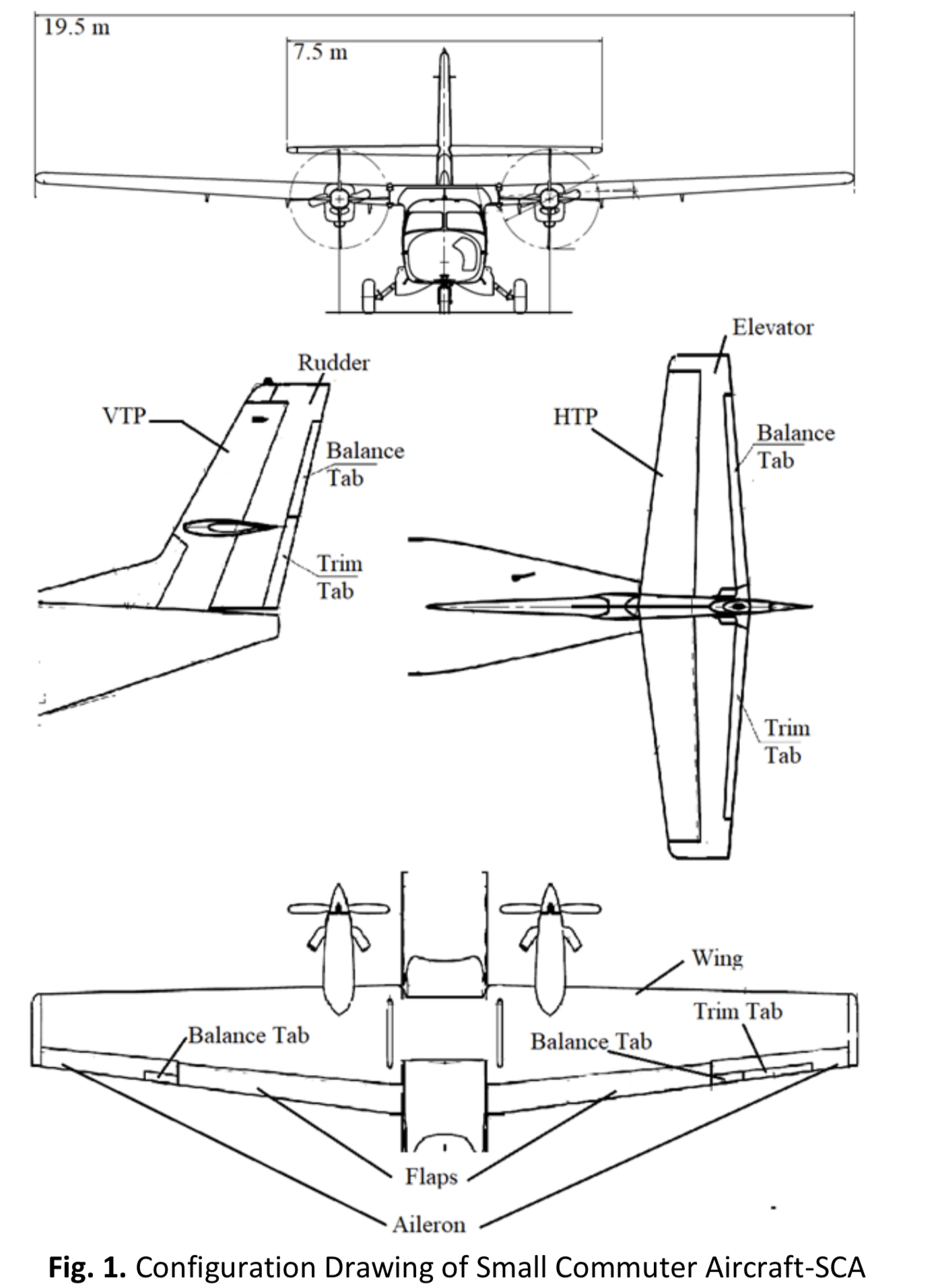Elevator Tab Model and Aerodynamic Hinge Moment Variation Effect on Flutter Analysis of a Small Commuter Aircraft
DOI:
https://doi.org/10.37934/cfdl.14.1.2037Keywords:
Flutter, Balance-tab, Aeroelasticity, Trim-tabAbstract
Investigation of flutter instability analysis is an important process during design phase and certification of an aircraft. Without proper analysis, the effect of modification at later stage of design process could come at high cost and risk. The present work examines detailed elevator tab model which could result in a more critical tab flutter speed. The present investigation of aerodynamic hinge moment variation effect on flutter analysis also shows a significant decrease in the flutter speeds. Three configurations involving elevator trim tab and balance tab fixed/free mechanism are investigated. Investigation of flutter sensitivity to tab rotational frequency and tab bending/torsion frequency was performed to determine the minimum tab rotational frequency requirement, so that it can be used as reference in design process. Variation of Mach number (for Configuration 1) and elevator aerodynamic hinge moment (all configurations) are performed. It is found that the aerodynamic variation takes effect when the mode involves both trim and balance tabs and tab elastic modes (e.g., tab torsion). It is found also that the most critical flutter case is for Configuration 3 where the trim and balance tabs are not fixed (independent). The result suggests that control surface tabs need to be modelled from the early design process, so that if any critical flutter appears and needs to be responded by a change in design, it can be implemented earlier and therefore avoid any costly risk.
Downloads
References
Indonesian Directorate General of Civil Aviation (DGCA), CASR Part 23 (Amendment 2) Airworthiness Standards: Normal, Utility, Acrobatic, and Commuter Category Airplanes, R.o.I.-M.o. Transportation, Editor. 2014: Jakarta.
US Federal Aviation Administration (FAA), AC 23.629-1B: Means of Compliance with Title 14 CFR, Part 23, 23.629, Flutter, W.U.D.o.T. Advisory Circular, Editor. 2004.
Bérard, Adrien, Luca Cavagna, A. Da Ronch, Luca Riccobene, Sergio Ricci, and A. T. Isikveren. "Development and validation of a next-generation conceptual aero-structural sizing suite." In Proceedings of the 26th ICAS Congress (Anchorage, Alaska), pp. 14-19. 2008.
Bhatia, Kumar G. "Airplane aeroelasticity: Practice and potential." Journal of aircraft 40, no. 6 (2003): 1010-1018. https://doi.org/10.2514/1.342
Broadbent, E. G., and Mary Clarke. "Elevator flutter involving two tabs." (1954).
Collar, A. R. The prevention of flutter of spring tabs. HM Stationery Office, 1943.
Duncan, John S. "Pilot’s handbook of aeronautical knowledge." US Department of Transportation FEDERAL AVIATION ADMINISTRATION Flight Standards Service (2016): 25-32.
Komzsik, L. "MSC/NASTRAN 2001-Numerical methods Users Guide." MSC. Software Corporation (2001).
Katia M. Mahasti, D042ND2009: N219 Flutter Analysis of Nominal Case Based on GVT Results, I. Aerospace, Editor. 2020: Bandung.
Donald M McLean, “MSC NASTRAN Dynamic Analysis User's Guide. 2011”, Santa Ana: MSC.Software Corporation.
Naylor, G. A. "Flutter of control surface tabs." (1942).
William, W. P., and E. H. Johnshon. "MSC/NASTRAN Aeroelastic Analysis User’s Guide (Version 68)." The Macneal-Schwendler Corporation, Los Angeles (1994).
Sulaeman, Erwin. Effect of compressive force on aeroelastic stability of a strut-braced wing. Virginia Polytechnic Institute and State University, 2002.
USAF Test Pilot School, Flying Qualities Phase-Chapter 14: Flight Control Systems. 1988, Los Angeles: US Air Force.
Wright, Jan Robert, and Jonathan Edward Cooper. Introduction to aircraft aeroelasticity and loads. Vol. 20. John Wiley & Sons, 2008.
Durmuş, Damla. "Aeroelastic analysis of variable-span morphing wing." PhD diss., Institute of Science And Technology, 2020.
Čečrdle, J., and O. Vích. "Aeroelastic analysis of turboprop commuter aircraft with tip-tanks.".in 31st Congress of the International Council of the Aeronautical Sciences. (2018).
Bin Abdullah, Nur Azam. "Numerical modelling and interaction of crack and aeroelastic behaviour of composite structure for aerospace applications." PhD diss., University of Sheffield, 2018.




























